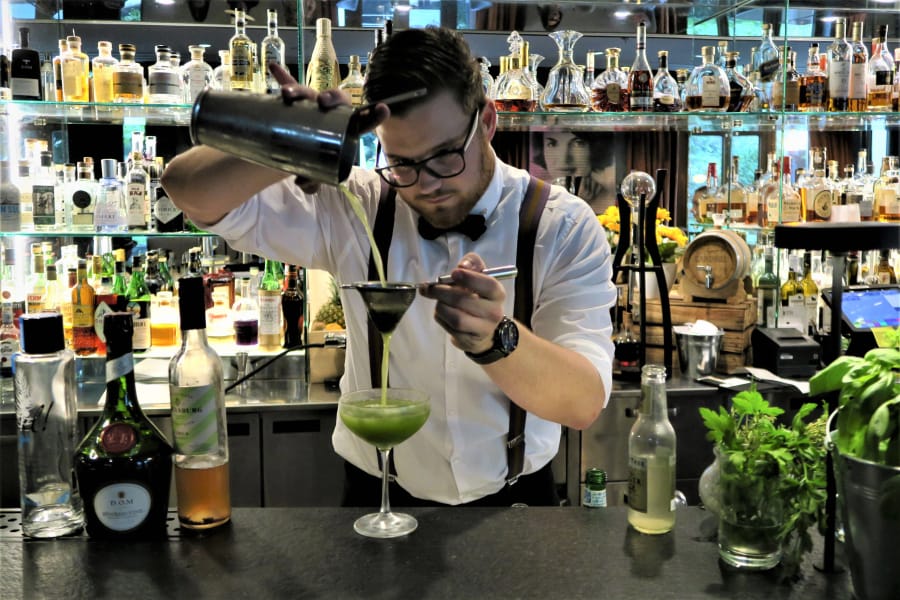It was a Thursday afternoon and the surfers were out in full force in the middle of Munich. If you had given me 10 or even 20 guesses which European city has a full-blown surf scene in the middle of an expansive central park, Munich would not have been on the list, but here they were in the English Garden, clad in wet suits, catching the waves that rolled through the Eisbach, a narrow channel of the Isar River, which flows from the Alps. Onlookers gawked and snapped photos.
This surreal scene was happening across a grassy plot from the Haus der Kunst, a contemporary art museum that was built in the 1930s to house Nazi propaganda art before it became an officers’ club for the U.S. Army. The walls in the room where the soldiers — and the Nazi officials before them — drank are covered in gold-leaf panels painted with maps depicting different wine- and spirit-making regions around the world. They were concealed with plywood to downplay the building’s history, but were uncovered and restored in 2003.
This is the historic backdrop for nighttime revelers, but on this sunny afternoon, hip young things, including a few with wet hair from the surf, were gathered on the expansive patio in the shadows of Doric columns. I settled among them for the outdoor bar’s signature — a gin sour topped with gin-and-tonic foam and sprinkled with dehydrated Campari bits — and tried to balance myself at this fascinating intersection of then and now.
Munich has long been a victim of typecasting, mired in a reputation of oversize mugs of beer and bratwurst consumed by lederhosen-clad revelers during Oktoberfest. But in recent years, bartenders and chefs have worked to make that an antiquated image. Their efforts are paying off.



